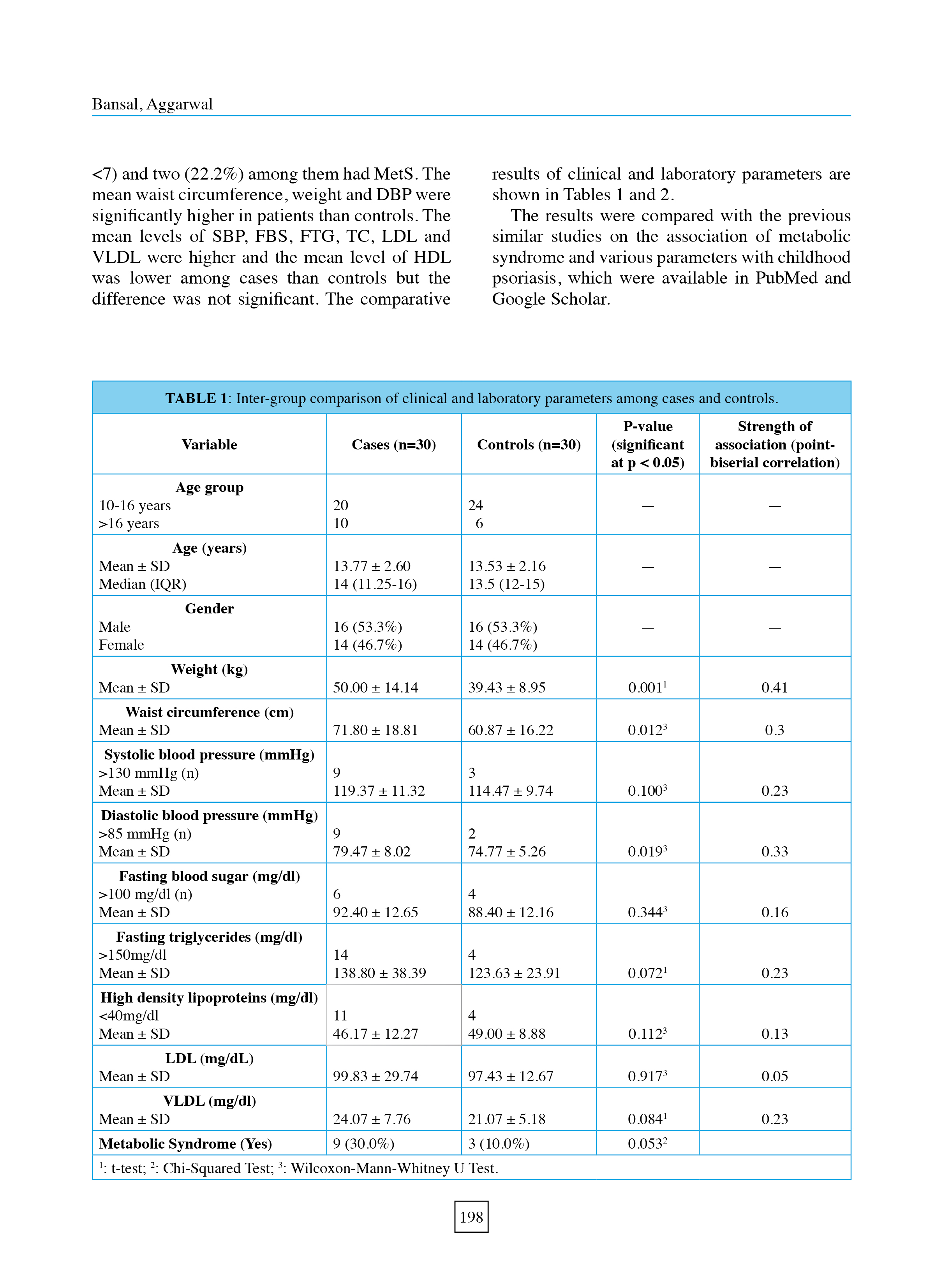Prevalence of metabolic syndrome and its parameters in pediatric psoriasis: a cross-sectional study with literature review.

Downloads
DOI:
https://doi.org/10.26326/2281-9649.34.4.2676How to Cite
Abstract
Background. Psoriasis is a multifactorial, chronic, inflammatory, and immune-mediated skin disease, known to be associated with various metabolic and non-metabolic comorbidities in adults due to the underlying systemic inflammatory response. It has been proposed that a similar interconnection between psoriasis and metabolic syndrome (MetS) is present in children as well. However, current literature on the prevalence of metabolic syndrome in pediatric psoriasis and data regarding its association with psoriasis severity in children are sparse in North India.
Methods. A one-year observational study was conducted to evaluate the association of MetS and its parameters among 30 children aged 10–18 years with chronic plaque psoriasis, who were compared with 30 age- and sex-matched controls. The International Diabetes Federation (IDF) 2007 criteria were used to classify patients with metabolic syndrome and disease severity was assessed based on Psoriasis Area Severity Index (PASI) score.
Results. Of 30 cases, nine (30%) cases had metabolic syndrome and of 30 controls, only three (10%) met the criteria for metabolic syndrome. However, the difference was not statistically significant (p=0.053). Various metabolic parameters such as waist circumference, weight, and diastolic blood pressure were significantly higher in psoriasis patients compared to controls. In addition, the prevalence of MetS was higher in cases with severe disease.
Conclusion. The results of the study showed an association of MetS and its parameters with pediatric psoriasis, but the results were not significant in statistical analysis, probably due to the small sample size and short duration of the study.
